Bob's Bloggers
A community of bloggers who live and die to DIY
sustainability, landscaping
Do It Together: Community Garden Renovation
By DIYnot on Apr 25, 2012
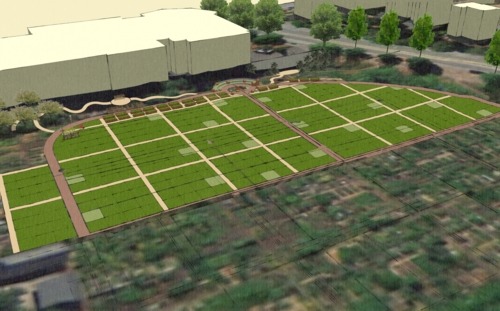
This is where I’ve been. And in the attic; and crawl space; and yard; and garage— you get the idea. Last September I was asked to participate in the renovation of our community garden (P-Patch). The year before, forward looking volunteers at the garden had applied for and received a $20k matching grant from the city. The “match” part requires that an equivalent amount of volunteer hours and donations must be leveraged to receive the full grant (that’s how I understand it anyway). Countless meetings, setting up a Google Site and other information systems, navigating dreams/realities/personalities: now we’re finally building. What you ask? Permanent paths and edging (my focus), 22 4x8’ food bank beds, a bamboo garden, a mushroom garden, a hillside of native plants, a children’s garden, a mural, new irrigation, and signage. I stand in awe what $20k can do with a grippe of willing hands and minds.
The concept above was created by one of two landscape architects who were hired for the project and who have gone above and beyond their compensation. The LA created the Google SketchUp drawing partly from my team’s initial path design (below)
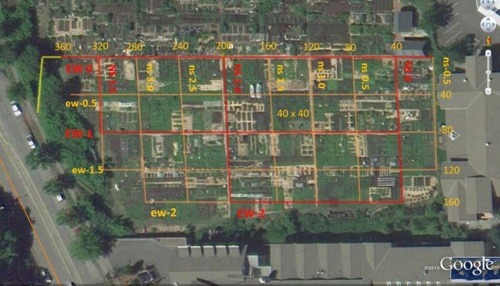
ASIDE: I can’t say how helpful the suite of Google products has been (and to be fair, Microsoft’s Power Point and Office helped along the way). But seriously, Google Earth, SketchUp, Sites, Groups, Docs, Spreadsheet/Forms, search, Gmail… Google may be one of several corps taking over the world but as far as this project they’re helping ensure they have a better world to take over.
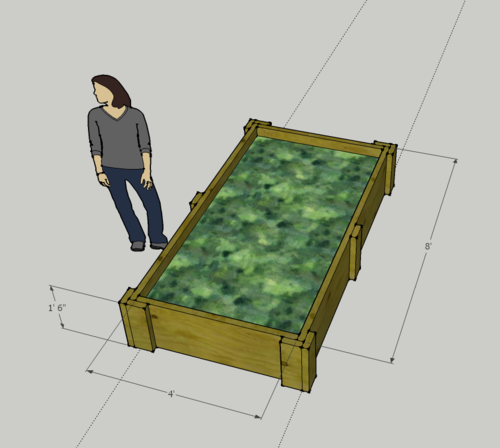
One afternoon I decided to wield my new SketchUp skills (see mantle project (1) and (2) where I developed them) to weigh in on the design of the raised 4’x8’ food bank beds (inspired by my own). The Food Bank team decided to use 2x6 juniper stacked three high for a raised height of 18”. Juniper surfaced as our best alternative for edging the paths and for many of the same reasons it’s perfect for the beds. It is sustainable, economical, beautiful and generally not easy to come by (more info on Juniper here from the Oregon State University Extension Service).

Here’s the ~1.25 acres that we’re renovating.
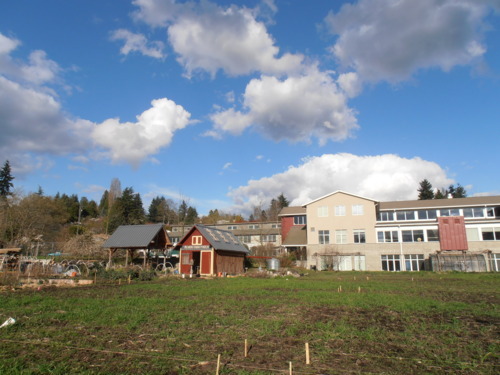
I’ve spent the equivalent of a couple days out surveying the paths. It’s been fun working with others, and by myself, to map out the space. In the background, with the aid of grant money and donations, several years ago volunteers built the beautiful red timber framed barn and gazebo. I’ve learned a ton surveying but will have to expound on that later.
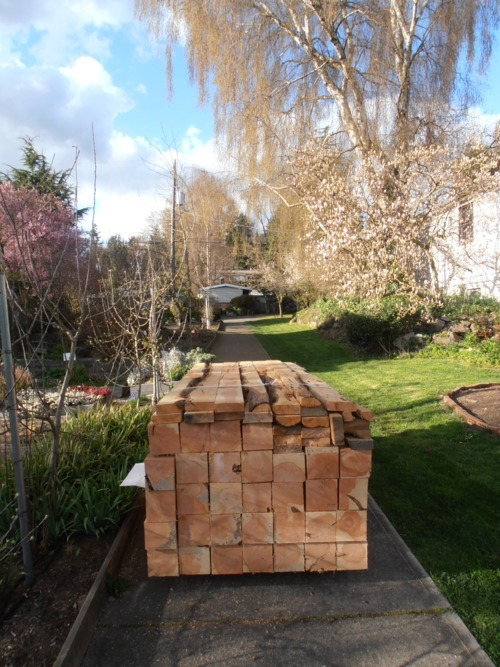
Far into the planning process, we decided to build a prototype for the edging of the block path concept we envisioned. 24 of the 8’ - 6x6” juniper were purchased for hose bib posts. The rest of the 2x6 and 6x6s were for the first steps we’d take in edging the paths.
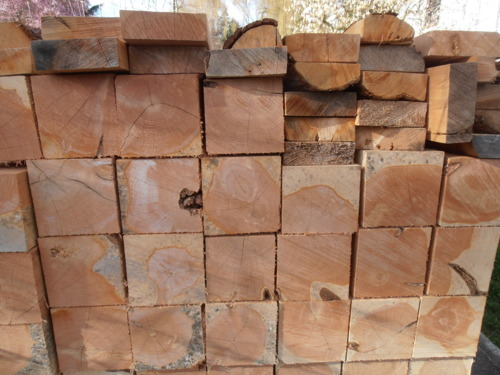
The juniper, especially the 6x6 is gorgeous. The 2x6s were the last of the lot so they had a lot of character even if too many were not really suitable for our purpose of path edging (the vendor will let us return them and we’re ordering about 800 more of them so it’s not a big deal).
Last Friday I finished the surveying and the next day 50 volunteers dove into trenching 1000s of feet for new irrigation lines, augering post holes for the hose bibs, and laying polypipe. I had to bow out after the survey to make sure Kelly and I stay on track with pre-baby projects… we are crazy: two more new circuits down and only one old circuit left to replace. Productive and enlightening days these are.
—Matt
blog comments powered by Disqus